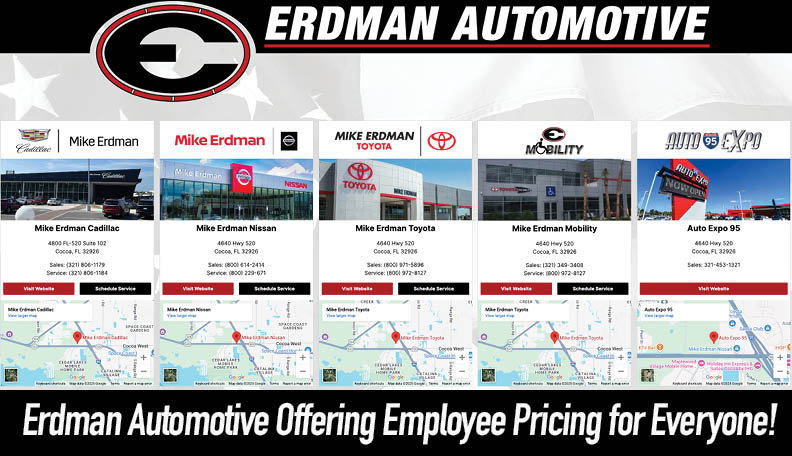Key Challenges at Each Stage of the ERP Life Cycle and How to Overcome Them
By Space Coast Daily // January 18, 2025

Enterprise Resource Planning (ERP) systems are huge software packages that bring together a variety of business processes and functions into one system. The ERP life cycle is a big undertaking, with major implications in terms of planning and management of the ERP life cycle, from evaluation of solutions to going live to maintenance.
Organizations encounter different challenges during each phase of the ERP implementation life cycle, and if those issues are not addressed properly, they are prone to derail the project. But, with focus, strategies, enough resources and robust change management, companies can get through.
This article provides an overview of the key stages in a typical ERP implementation life cycle, the challenges inherent at each phase, and practical tips to tackle those issues. It offers actionable advice for technology decision-makers, project teams, and end-users to drive ERP success.
The ERP Implementation Life Cycle
The ERP implementation process, with the help of ERP software development services, follows a standard ERP lifecycle with consecutive phases that build on each other. While each vendor has its methodology, the basic stages are:
Planning
In the planning phase, companies do a business requirement, process and technology gap analysis to determine the need for an ERP system. They define the project objective, resource planning and timeline.
Solution Selection
During this phase, the ERP implementation team, third-party integrators and server infrastructure setup is done, and workshops with stakeholders are conducted to configure the software according to business requirements. This is where data migration planning also starts.
Project Preparation
This phase involves setting up the ERP implementation team, third-party integrators, and server infrastructure, as well as conducting workshops with stakeholders to configure the software for business requirements. Data migration planning also begins here.
Implementation
During this stage of the implementation life cycle, the solution is customized, integrated and tested extensively through conference room pilots (CRPs), user acceptance testing (UAT) and migrated into production. During this time, end-user training also occurs.
Go-Live & Support
This phase is where the system goes live, and the vendor team will be on site for the initial few weeks to help make the transition and deal with any teething issues.
Key Challenges and Recommendations
ERP Planning Stage
Challenge #1: Unclear business objectives
The very first step of ERP planning requires aligning all key stakeholders on main project goals, business priorities, and success metrics. However, many organizations fail to define these elements upfront. Without clear objectives, the project scope tends to expand, leading to budget overruns and delays.
Recommendation:
Conduct structured vision and requirement planning workshops with senior management, process owners, and IT leads to establish consensus on project outcomes, priorities between departments, expected benefits, and success indicators like ROI. Document these in detail before proceeding further.
Challenge #2: Not analyzing current processes
Some companies hurry into ERP selection without properly analyzing their current business processes, pain points, system gaps and feature needs. However, the effectiveness of an ERP system depends directly on how well it is tailored to support business processes.
Recommendation:
Invest sufficient time upfront to map processes, identify bottlenecks, collect input from user groups through interviews and workshops, analyze data pain points, and evaluate how each department operates. This will lead to a well-informed software package selection that is aligned with business objectives. Allocate a process analysis task force if needed.
Challenge #3: No executive sponsorship
Lack of executive leadership is a common organizational oversight during planning. However, ERP success hinges greatly on having an executive sponsor to coordinate teams, manage stakeholder expectations, oversee the budget and timeline, spearhead change management, and provide course corrections when needed.
Recommendation:
Identify a steering committee of senior management from IT, Finance and Operations departments to take ownership of the ERP program. Appoint an Executive Project Sponsor to lead the steering team, communicate project progress to the board, spearhead change management initiatives and ensure collaboration between groups.
ERP Software Selection Stage
Challenge #1: Overlooking change management needs
Often, the software selection process focuses extensively on technical features and integrations but does not sufficiently evaluate the impact of change on end-users. This leads to pushback during the implementation life cycle if the solution is too complex or misaligned to user skill sets.
Recommendation:
Look at ERP solutions through the lens of user-centric criteria, which include interface usability, ease of reporting, mobility options, role-based access, self-service functionality, and training support. Select the package evaluating change readiness through surveys and factoring in the change management efforts required after going live.
Challenge #2: Customization pitfalls
Some organizations are swayed by vendors’ promises of endless customizations to meet all possible business needs. However, heavy customization leads to complex, expensive and risky implementations that nullify upgrades and prevent realizing the full business value.
Recommendation:
When it comes to the ERP, go for the “vanilla first” approach, i.e., choose out-of-the-box features that will serve at least 80 percent of needs. Assess if business processes can be adapted to software capabilities first before customizing those for unique processes. Decide based on vendor implementation methodology and upgrade support for customizations.
Challenge #3: Unrealistic expectations
Seeing complex ERP software demos with transformed data visualizations and intelligence often leads to unrealistic expectations from the new system. However, achieving those outcomes requires fundamental process and data quality improvements first.
Recommendation:
Showcase demos to stakeholders with their own data to actually show what the real outcomes would be. Assess data maturity upfront through assessments to evaluate expectations from process improvements vs. software capabilities. If necessary, major phase changes will be required across multiple milestone releases post-implementation.
Project Preparation Stage
Challenge #1: Inadequate training of the project team
ERP tools, technologies and modules are vast and complex. However, companies often assign resources from within the organization without verifying if the team has the required skill set. This hampers productivity down the line due to the steep learning curve.
Recommendation:
Different roles, both functional and technical, must have a defined set of must-have capabilities. Proficiency assessments of resources allow you to assess them and assign them to suitable modules based on skill sets or provide them with relevant training in advance. Use outside consultants whenever you feel there is a gap in a niche technology area.
Challenge #2: Delay in server & infrastructure setup
ERP systems require setting up new servers, storage, databases, security layers, and connections to existing tools, networks, etc., all of which take time because of internal IT change approval processes. Infra setup is often deprioritized, and things get delayed later.
Recommendation:
Initiate server procurement, network changes, security reviews, etc., in parallel with the software selection phase to account for internal IT timelines. Define infrastructure requirements early through vendor workshops. Pursue approvals aggressively tracking dependencies to avoid delays.
Challenge #3: Poor data quality assumption
Legacy systems are plagued by data errors, duplicates, and integrity issues. However, teams often realize data problems late in user acceptance testing, which leads to delays in data cleanup and migration.
Recommendation:
Using tools, conduct detailed data quality, integrity, and transformation assessments for all data entities early on. Define data quality benchmarks and audit reports to track progress. Allocate data stewards for continuous monitoring. Build suffers in the project plan to account for data cleanup time.
ERP Implementation Stage
Challenge #1: Customization creep
However, businesses see that customizations are possible, and they over-customize the software to keep legacy processes instead of changing the workflows to take advantage of ERP best practices. This complexity reduces user adoption costs and timelines.
Recommendation:
Start early with challenging status quo processes through process reengineering workshops. On the other hand, update your SLAs so they can eliminate outdated practices and policies and then customize them. Address user concerns that impede standardization following change management techniques.
Challenge #2: Too many configuration options
ERP systems come with hundreds of configurations, fields, and settings that can be activated. Trying to implement everything together leads to endless testing, user confusion and delays.
Recommendation:
Through JAD sessions, agree on “need to have” versus “good to have” configurations by process area. Standardize configurations across business units. The phase-wise rollout of all options post-go-live.
Challenge #3: Lack of testing
Often, testing is deprioritized to meet go-live deadlines. User testing, however, is not conducted enough, with many bugs and scenarios failing to be picked up until after the production rollout, this leading to business disruption and costly fixes.
Recommendation:
Stimulate the creation of well-defined structured test strategies and scenarios early for each business process area. While planning your project, allocate some time for CRP and UAT testing. Take the time to report issues to a formal bug tracking tool and determine the severity so fixes are easiest. Continuously maintain an association between test cases and a file.
Go-Live & Support Stage
Challenge #1: Going live prematurely
Sometimes, leadership pressure to meet pre-committed launch dates forces the unfinished system to live, leading to outages and rollback plans. However, aborted go-lives badly impact the budget, resources, and credibility of the subsequent launch.
Recommendation:
Define quantitative go/no-go criteria covering reliability, user readiness, training, and data reconciliation. Set expectations on timeline fluidity. Be transparent about delays rather than force-fit go-lives without resolving SEV (severity) 1 incidents just to meet dates.
Challenge #2: Lack of support coverage
Vendor teams disband soon after going live, leaving end users struggling with no assistance. This accelerates disengagement with the new solution in the long term.
Recommendation:
Negotiate adequate on-site vendor support tenure as part of contracts to assist business operations during the initial transition hiccups. Supplement with in-house helpers to hand-hold users at the desk side. Provide easily accessible help guides to chatbots.
Challenge #3: Usage reporting overlooked
After going live, many companies forget to set up usage monitoring for key metrics like login rates, portal adoption, transaction volumes, etc. Without metrics, how do you know if ERP adoption is going well over time or how to address engagement problems?
Recommendation:
For each module, define 2–3 usage KPIs, like self-service rates, approval turnaround times, and login rates. Set up the ERP system to configure periodic automated dashboards to measure adoption. Hold the module owners accountable with repeated reviews.
Conclusion
ERP projects are among the largest and most business-critical initiatives that companies take on because of the scale of technology change and the impact it has on operations. If technology leadership understands the pitfalls at each implementation stage and the correct mitigation strategies, they can prevent these problems and achieve ERP success.
By covering objectives, processes, and resources in robust planning, selecting pragmatic software that meets sustainability and usability needs, and executing controlled planning that minimizes customizations, companies can promote user adoption of the new solutions. Therefore, executive leadership is necessary to enforce decisions in the long-term business interests despite some initial compromise.
Organizations that adequately invest in change management initiatives, including communication, training and support, can raise employee awareness of and engagement with the ERP program and new ways of working.
Different competencies, focus areas and governance techniques are required for each implementation stage and coordination between groups is required to prevent misalignment. However, with concerted cross-functional collaboration, technology leaders can overcome the recurring challenges in the ERP journey and capitalize on the promised business value from these mission-critical investments.












